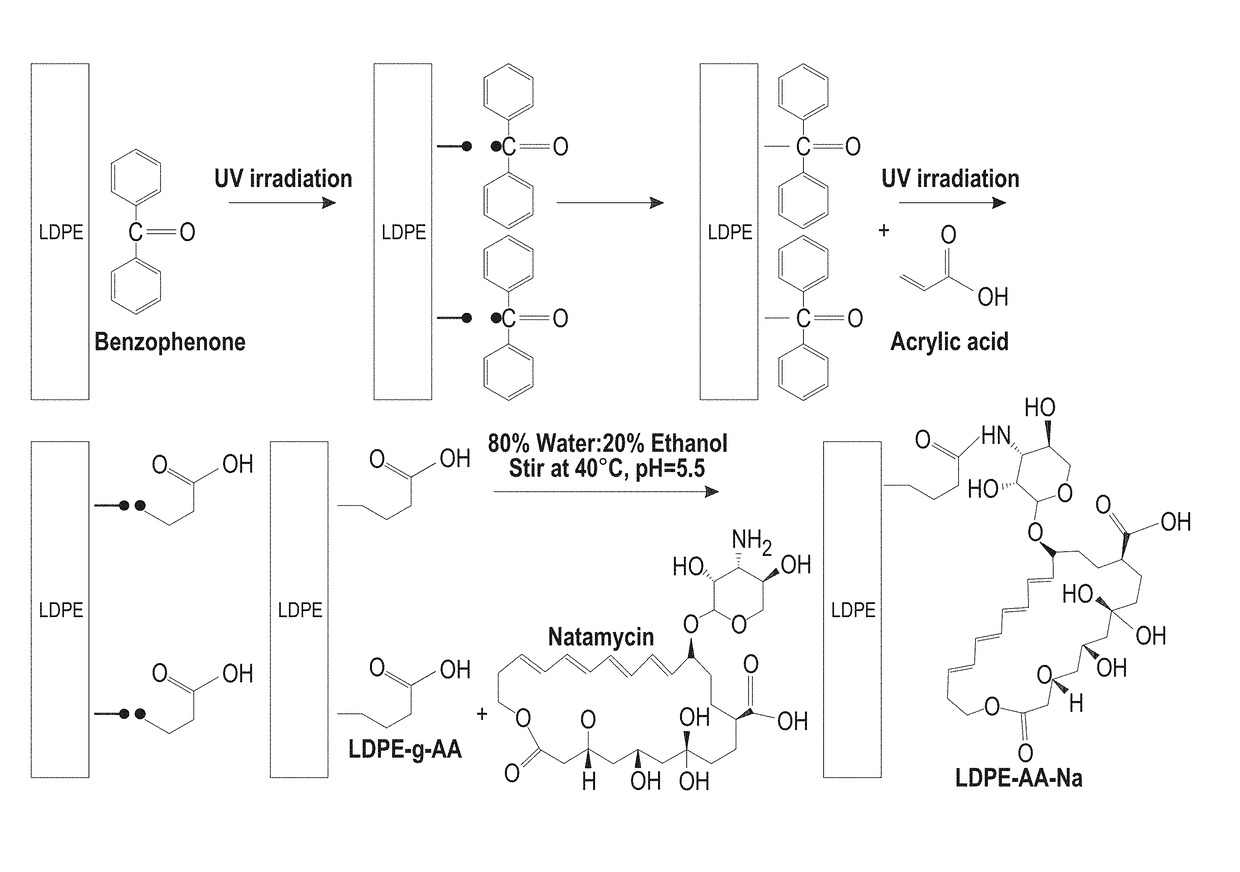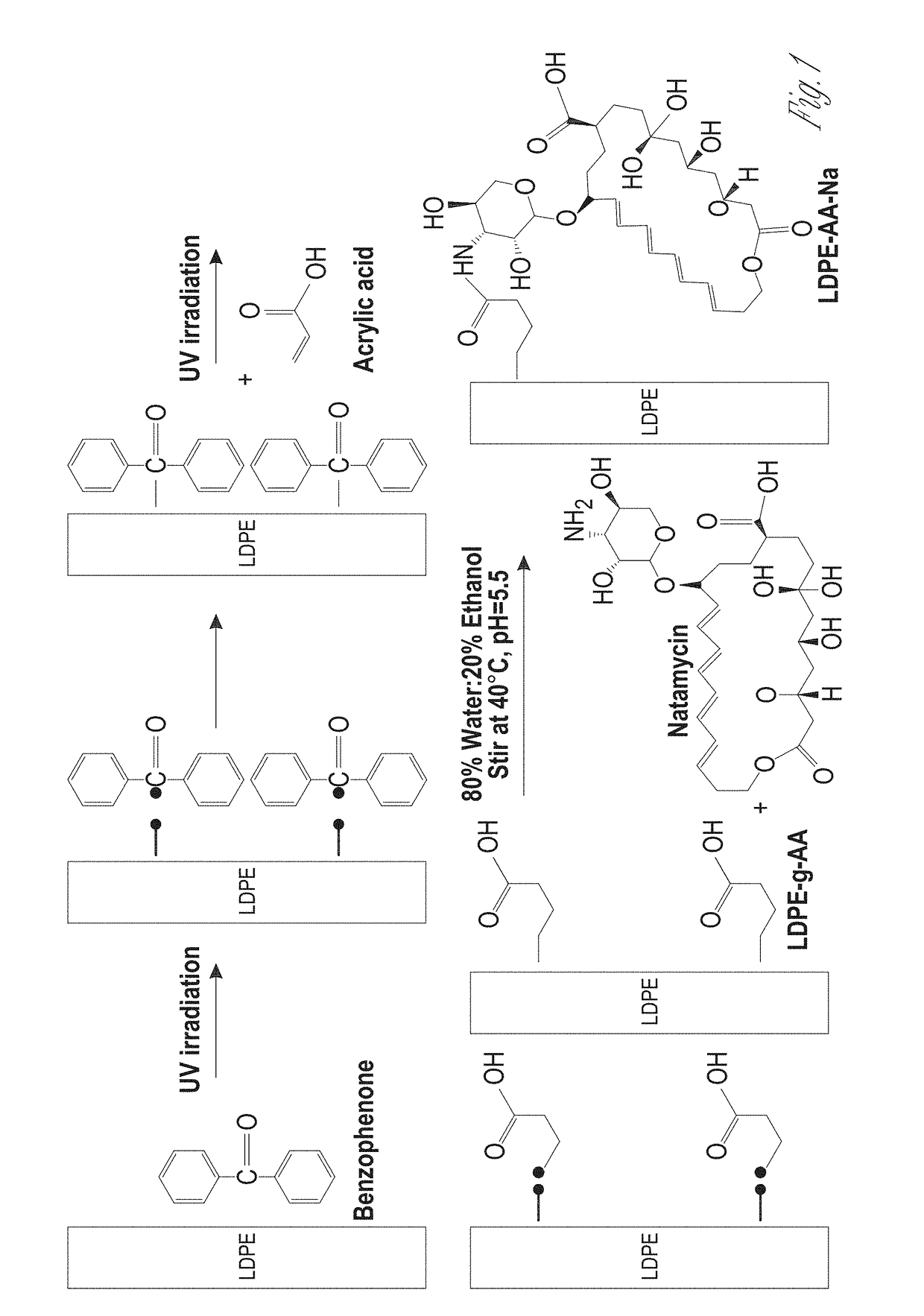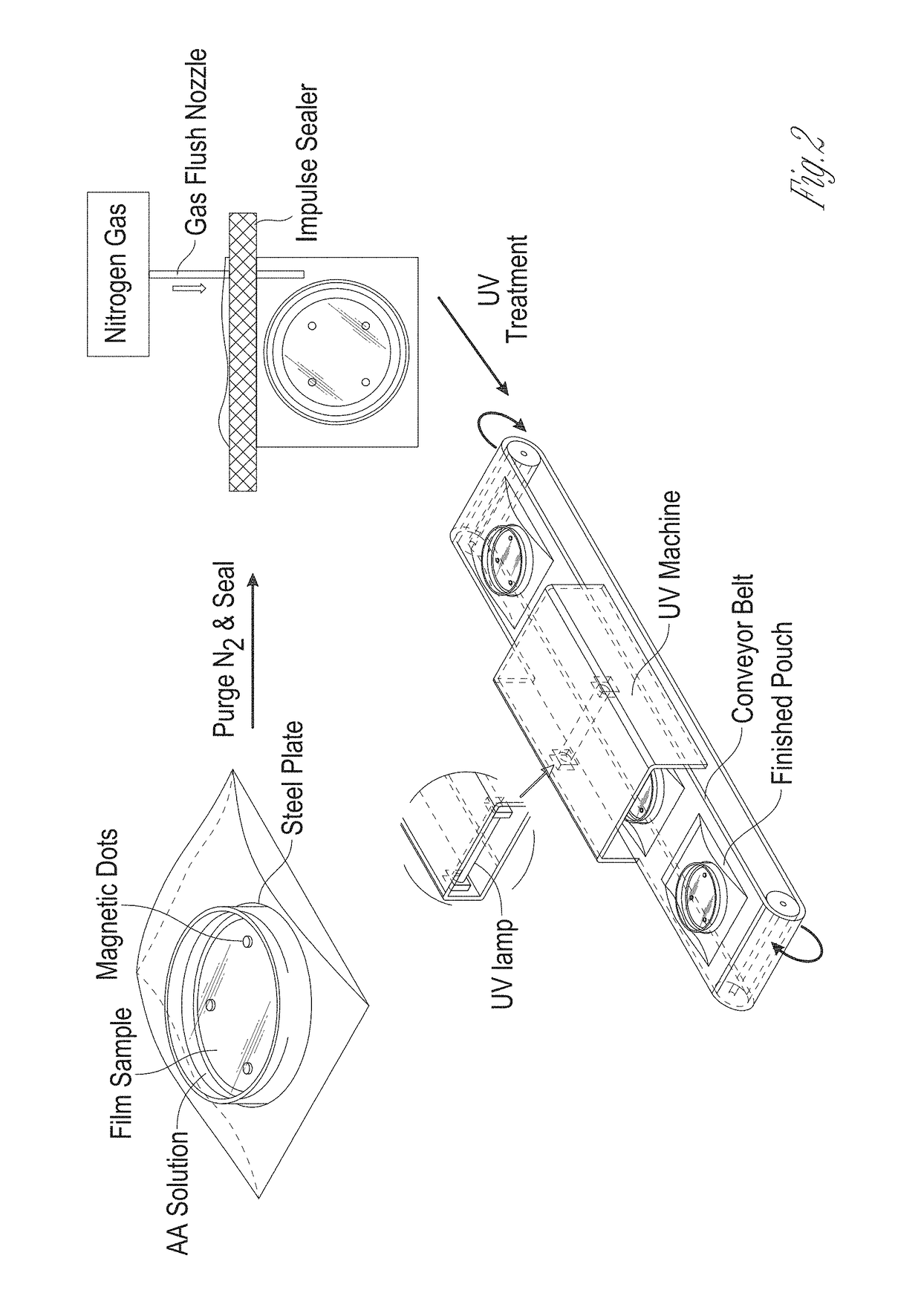Antifungal-grafted polyolefin
- Summary
- Abstract
- Description
- Claims
- Application Information
AI Technical Summary
Benefits of technology
Problems solved by technology
Method used
Image
Examples
example 1
and Methods
Example 1.1. Materials
[0062]Natamycin was donated from Danisco (Fayetteville, N.C., USA). Acrylic acid (AA) and Acid Orange 8 dye (AO8) were purchased from Acros Organics (Fair Lawn, N.J.). Monobasic sodium phosphate and Disodium phosphate, Benzophenone (BP), acetone, chloroform, ethanol, and hexane were purchased from Fisher Scientific (Waltham, Mass.). LDPE cling wrap (Saran, SC Johnson, Milwaukee) was purchased from the local grocery store. Tween 80 (polyoxyethylene sorbitan monooleate) was purchased from VWR (Chester, Pa.). Dichloran Rose Bengal Chloramphenicol (DRBC) Agar, and Potato Dextrose Agar (PDA) were purchased from Difco Laboratories (Detroit, Mich.). Dry yeast (Saccharomyces cerevisiae, Fleischmannes, Cincinnati, Ohio) and fresh cantaloupes were purchased from local grocery store.
example 1.2
of LDPE Film
[0063]LDPE clings wrap films with an average thickness of 12.5 μm were cut into a circle piece which has 100 mm diameter. The film was then cleaned with ethanol and acetone, and rinsed in deionized water sequentially (30 min per repetition per solvent), in order to remove a number of additives such as antioxidants and UV stabilizers which may interfere with the graft polymerization process and subsequent antioxidant activity assays. Then, the sample was dried under fume hood for 24 hours at ambient temperature.
example 1.3
of BP Coated LDPE Film
[0064]The LDPE cling wrap was dipped in various solutions, including acetone, ethanol, chloroform, and hexane containing 0.2M BP for 12 hr and dried through ventilation hood for 30 min to evaporate the solvent. The amount of BP absorbed by the film was determined gravimetrically using microbalance. The estimated total weight gain was calculated as follows:
TotalWeightGain(TG)%=Wg-WoWo×100(%),
where Wg and Wo are the weights of the film sample after and before dipping in solvents, respectively.
PUM
| Property | Measurement | Unit |
|---|---|---|
| Fraction | aaaaa | aaaaa |
| Time | aaaaa | aaaaa |
| Time | aaaaa | aaaaa |
Abstract
Description
Claims
Application Information
 Login to View More
Login to View More - R&D
- Intellectual Property
- Life Sciences
- Materials
- Tech Scout
- Unparalleled Data Quality
- Higher Quality Content
- 60% Fewer Hallucinations
Browse by: Latest US Patents, China's latest patents, Technical Efficacy Thesaurus, Application Domain, Technology Topic, Popular Technical Reports.
© 2025 PatSnap. All rights reserved.Legal|Privacy policy|Modern Slavery Act Transparency Statement|Sitemap|About US| Contact US: help@patsnap.com



